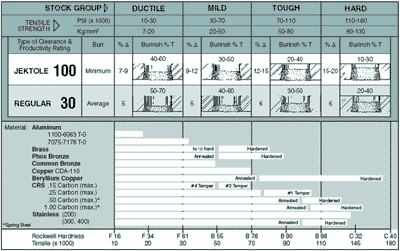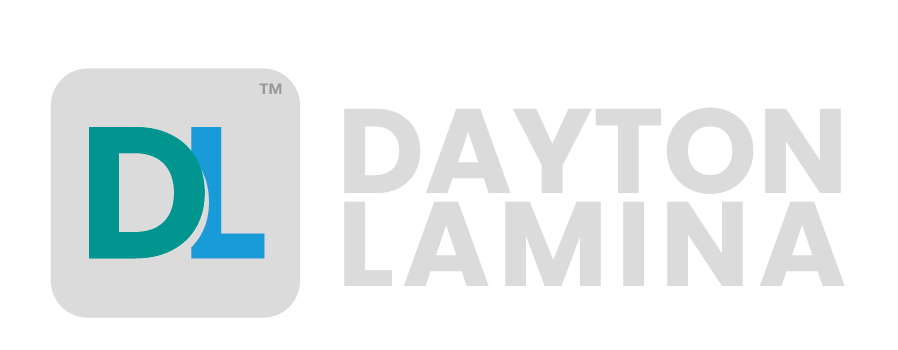The Productivity Selector correlates different types of stock, grouped by tensile strength, type of clearance and the resultant burnish length and productivity rating. The Productivity Rating, simply stated, shows that Jektole Clearance will produce over three times as many parts between sharpenings as Regular Clearance. Selecting the proper Jektole Clearance can do more for your stamping productivity than any other single factor.
How to Select the Proper Clearance
- Determine the Stock Group by tensile strength of the part material. (See Material Chart at bottom if you don’t know tensile).
- Select the Jektole Clearance expressed as % i (% of stock thickness [T]) for maximum productivity. i = clearance per side.
- If your material is in the high range of tensile, use the higher clearance; if in the low range, use the lower clearance. Ex.: 40,000 P.S.I. 10%; 60,000 P.S.I. 11%
- If burnish length is the main criterion, select the clearance that produces burnish needed. If the burnish length with Jektole Clearance does not meet your needs, choose Regular Clearance. Reducing the clearance increases the burnish length and wear on the punch.

Hardness values are based on commercial data available from various sources and are considered approximate.
The Rockwell scale readings used include:
C hard steels and materials harder than B100
B soft steels and non-ferrous alloys
F annealed non-ferrous alloys and thin soft metal strips and sheets. Low “F” values have been interpolated from Brinell readings.
NOTE:
- The values shown are from the averaged results of over 2000 clearance tests. If you want a test of your material, contact your local Dayton Distributor.
- The Regular clearances shown are the “old rule of thumb’ which applied the same clearance to different stocks.
- “Burr Free” stamped parts do not exist without some tumbling or with tool sharpness, cutting clearance and material character. Values shown were produced with a .002” – .004” radius on punch point.
- The percent of burnish shown is for a hole whose diameter is greater than 1.5 times the stock thickness. Hole diameters less than 1.5 times stock thickness extend the burnish length. For the latter condition, clearance should be increased beyond the values shown.

